Narara Marine National Park – Exploring aquatic life of the reef
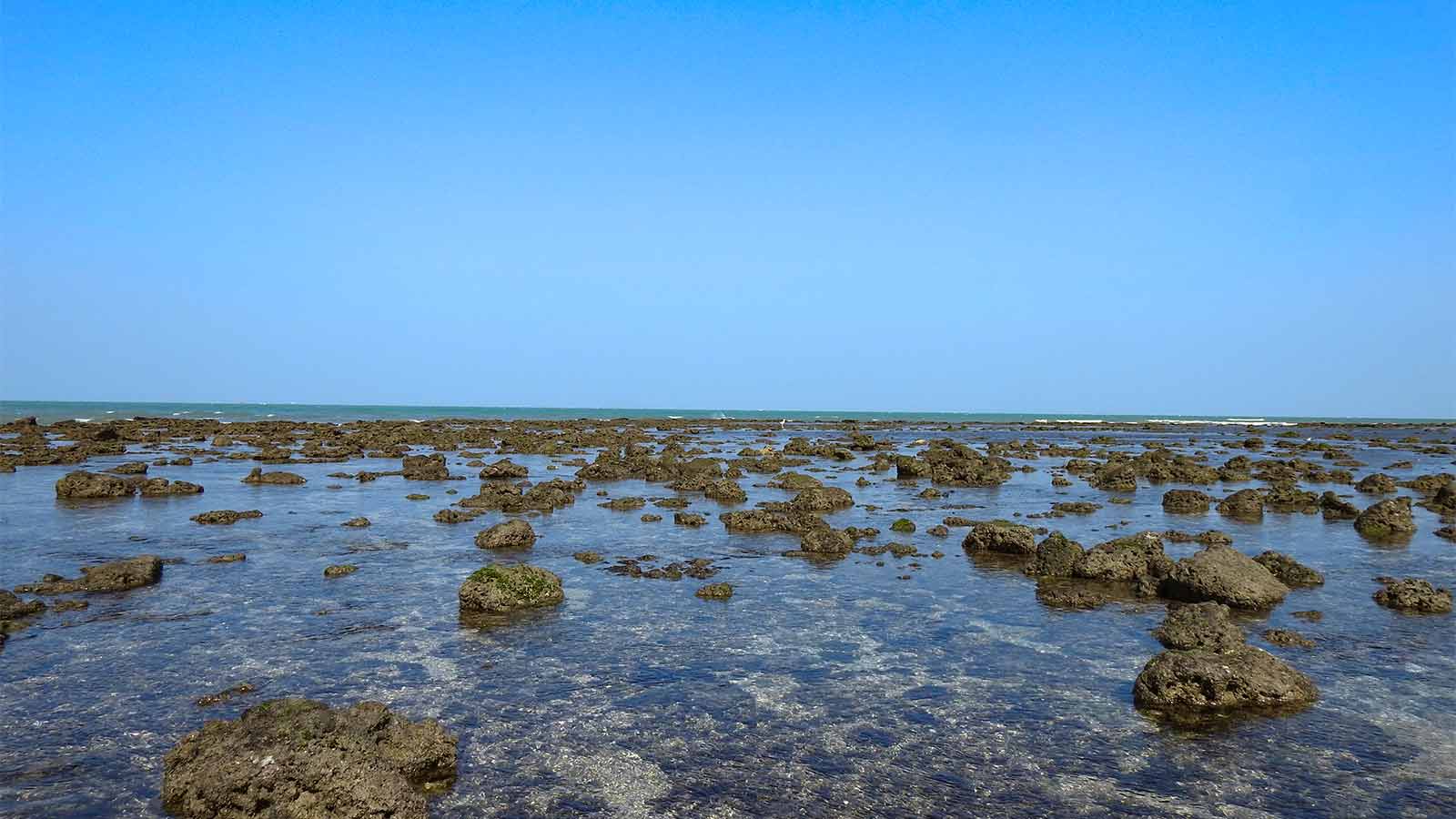
The Porous rock in the Narara reef is helpful for the little marine creatures to hide during the low tide. This is the time for a perfect reef walk in Narara.
Narara Marine National Park is the only marine park in India and it is situated in Jamnagar, Gujarat. Gujarat is a large state, so only if we drive long distance we could cover different terrains. So after visiting the white desert in Great Rann of Kutch, we drove to Jamnagar which is 350kms far away. We didn’t mind the drive but the only dilemma was whether to visit the famous Gir forest or the not so famous Narara reef. We were not sure whether the marine national park would even look the way we expected but still we decided to visit Narara reef instead of doing another safari drive in Gir Forest. The decision was right as we had a very different experience in Narara from the other wildlife sanctuaries we had visited earlier in our Gujarat Road Trip.
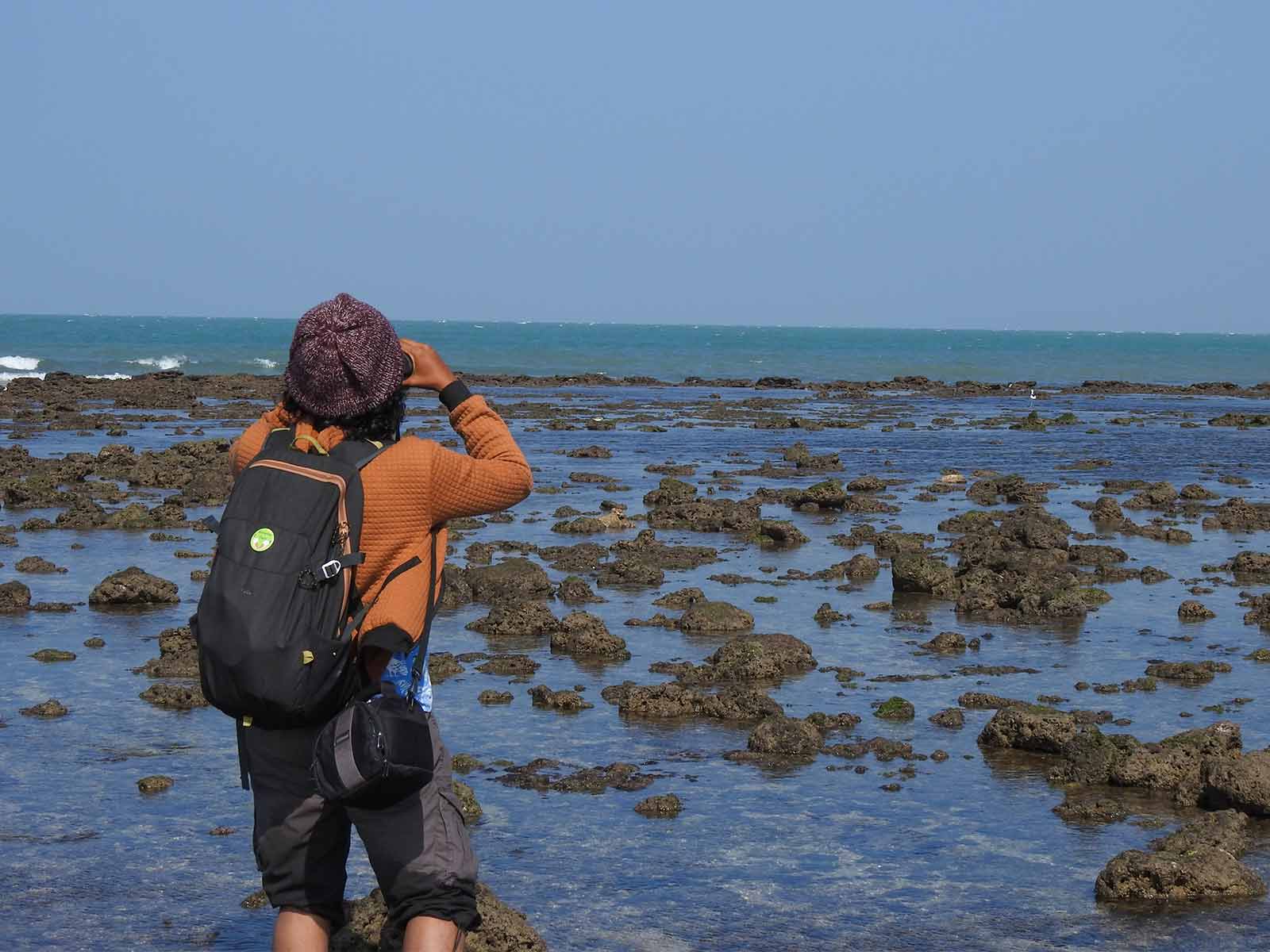
Can you spot the Crab Plover?
Tide timing is a very important factor when you are visiting seashore. The sea looks very different in high tide and low tide. Once we reached our hotel in Jamnagar, we checked about the tide table with the hotel manager and he had no clue about that. He thought we had come for official visit to Reliance refinery. So when we told that our purpose of the visit to Jamnagar was to see the birds and marine animals in Narara reef, he had no idea what we were talking about. We were bit confused that if the place was not famous even among the locals then was it a good or bad indication! Anyway next day early morning we drove to Narara Marine National Park. On the way we saw the Kingdom of Ambani with all the refineries and jio banners. So with all those refineries nearby , the narara reef was damaged like we expected. The sea sponges, coral reefs and birds had faced enough damages with oil spills and habitat destruction. The Narara Marine National Park is the last remaining little space for these poor creatures.

The damaged sea sponges in Narara reef because of the oil spills from the nearby refineries. These are the hard truths we face every time we visit natural places in this world.
We reached the entry place and as expected no people were there. So we decided to wander around till some park employee opens the ticket counter.
The weather was chill, so we just stayed in the car and saw the few plovers who were pecking around in the inter-tidal zones. I loved to watch them but most of them looked same to me especially in the non-breeding plumage. Vinod was trying to take video of the fast moving plovers. They just keep their heads down and move the way like some wheels were tied on their legs. So it was tough tracking them and Vinod was having a hard time to follow the Dunlins.

terek sandpiper
After an hour, a guide came and he told the tide was around 10.30 AM only. It was just 8’o Clock, so we drove to the nearby road where we had good view of the sea. We sat on the guardrails facing the sea and had our simple breakfast. The breeze was cold but enjoyable, so we just sat there and relaxed.
After sometime, we went back to the marine national park where activities had started. The Counter was open and the person in the ticket counter asked us whether we need a guide. The marine environment was new to us , so without a guide we won’t be seeing much in the marine park. So we decided to take a guide which was unusual for us but it turned out to be a good decision. We paid the entry fee and started our marine walk with our guide. Once we crossed the small mangrove section, we put our foot in the cold water. The sea floor was covered with rocks and corals , so we treaded carefully.
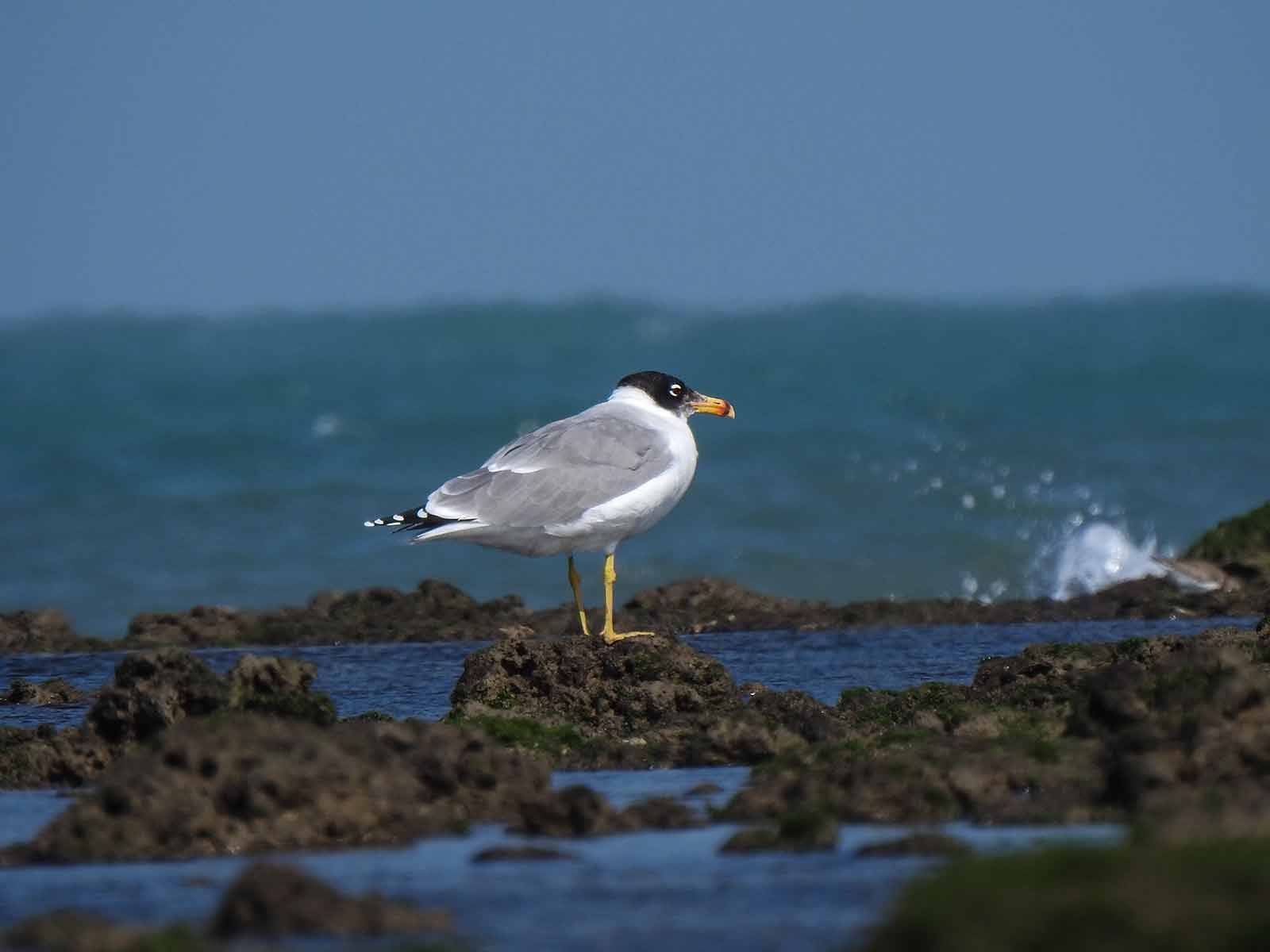
Vinod spotted this Pallas’s gull inside narara marine national park. When looked closer, I could see the difference from this gull to other gull species. These birds are migratory to India.
The wind was heavy and after few minutes of walk I was trudging through the water. The sea was in beautiful blue color and I was enjoying that walk in the sea. Vinod was keenly searching for shore birds and trying to spot marine creatures but our eyes were not yet trained for that. Soon, the guide bent and took something in his hands. I rushed to see my first marine creature in Narara and it was the Wolf Crab. It was very different from the usual crabs we see on the rockbeds.
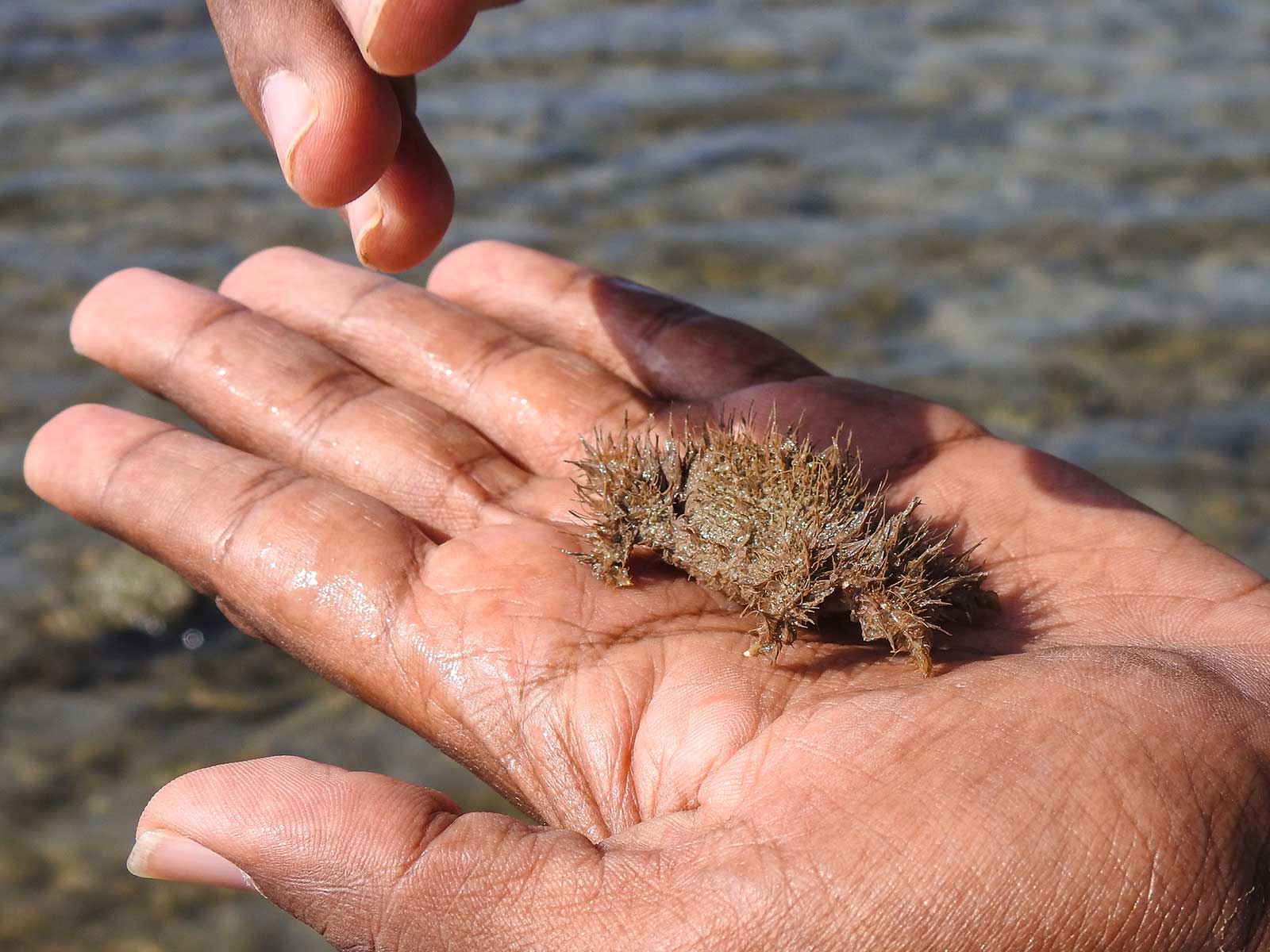
The Wolf Crab in Narara looked muddy and spiky!
We walked a little further and the guide showed us something very amazing. The guide told us it was the “Sea Flower” and when we touched , the tentacles slowly started closing. We were very excited to see this fascinating creature which we later learnt as “Green or Haddon’s Carpet Anemone”.
After sometime, the guide picked up a Starfish and it was the “Brittle Starfish”. Like the name, it looked very brittle that a simple touch might break it. The design on the starfish was amazing when we looked closer. The marine life is totally different from the land creatures. As we were not very exposed to the underwater life, vinod and myself were very excited with our sightings. The guide was also energized seeing our enthusiasm, so he searched with sincere efforts. He kept back all the marine organisms unharmed in the same place from where he took to show us.
The guide showed us few more crabs and one of them was “Neptune Crab”. The blue color crab was very attractive and we were amused at the species diversity in this Narara reef.

I am not sure whether the name mentioned by the guide is officially correct but it all looked “Name with Reason”. For instance this Crab is called “Neptune Crab” because of its blue color!
We noticed most of the corals were already dead and the guide told it was all because of the oil spills from the refineries. If we could see these many creatures in this habitat, imagine the original diversity in an unspoiled habitat. We saw few more Giant Carpet anemones and everytime we were fascinated. In one of the Giant Carpet anemones (Sea flower) , the guide picked up an “Anemone Shrimp”. When he explained about the symbiotic relationship between the anemone and the shrimp, we were really awestruck.
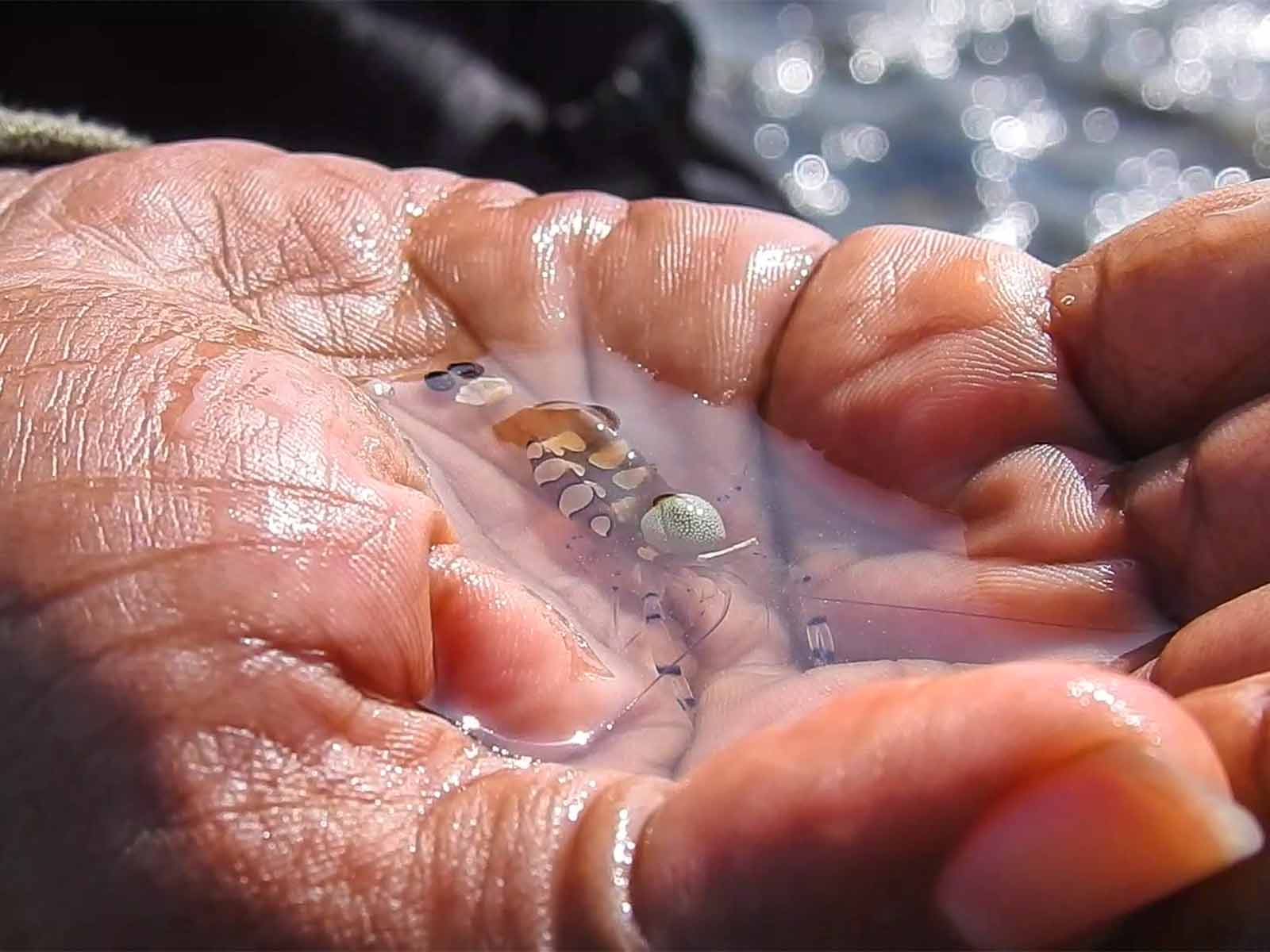
This transparent anemone shrimp was very beautiful and the designs on the body were mind blowing. How fascinating these little creatures are!!
We had walked quite a distance by this time and we didn’t even realize it as we were very thrilled. So when the guide told, we had to start walking back we were disappointed.
On the way back, the guide took us through different route. There were few big rocks and we saw gulls sitting on the rocks. But one white colored bird looked different and that was the bird we hoped to see in Narara. It was the “Crab Plover” and the bird really looked very beautiful in the sea background.
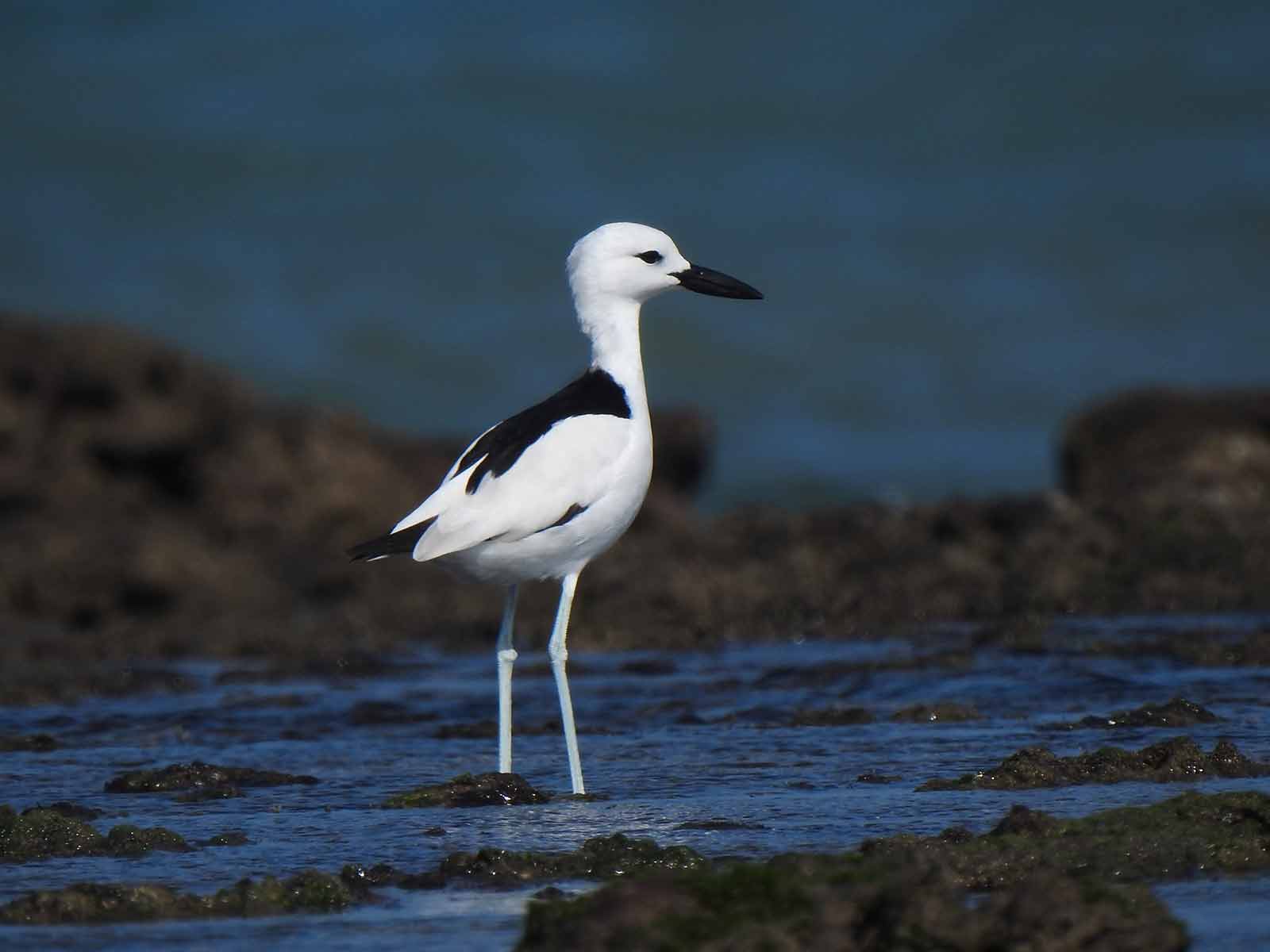
The Crab Plovers usually nest in colonies. So when we saw one crab plover, it didn’t make us feel good. These birds take very good care of their chicks, so they need nice breeding location to take care of their young ones.
We saw only one bird and we were disgruntled to know that these crab plovers were highly affected by the oil spill and the population in Narara reef was largely reduced. We saw few more crab plovers closely after few minutes and they were in hunting mode. We were happy to see these crab plovers but saddened to know about their current population status.
The tide already started reversing slowly, so the guide told us to quicken our pace. But we stopped soon, to see a fish moving swiftly in the water. It was the “Puffer Fish” who as per the name was puffed up sensing the danger. We had seen them always washed up dead in Marina beach, Chennai . This was the first time we were seeing it alive and it was really very cute. When the puffer fish was put back in sea, it quickly swam away. When we thought the show was offer and started walking back, we saw another amazing creature “Common Octopus”. The Octopus Vulgaris spilled ink sensing danger and the guide caught the octopus with his trained method.
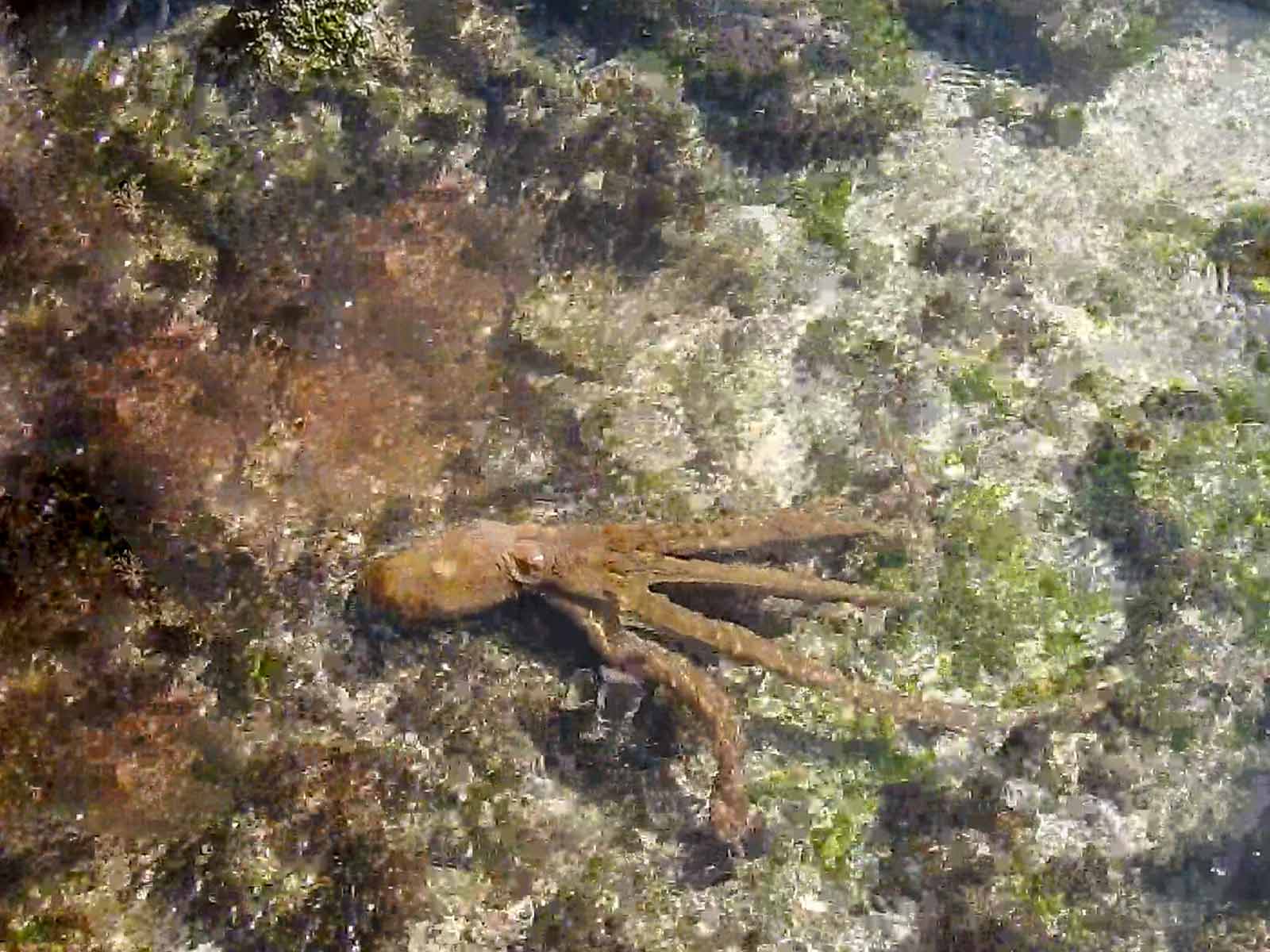
We were very excited with our first wild octopus sighting. It was quite small and looked like an alien to me. It sensed danger and immediately sprayed ink, what an interesting protective mechanism!
He handled the octopus by moving continuously otherwise the octopus started sucking up his hands with it’s sticky tentacles. We had seen Octopus only in aquarium and that was our first wild sighting. Needless to say, we were quite fascinated. Leaving back the Octopus safely, we walked back enthusiastically talking about our sightings. Now we were near the shore, the guide told us to just enjoy the place and he walked infront.
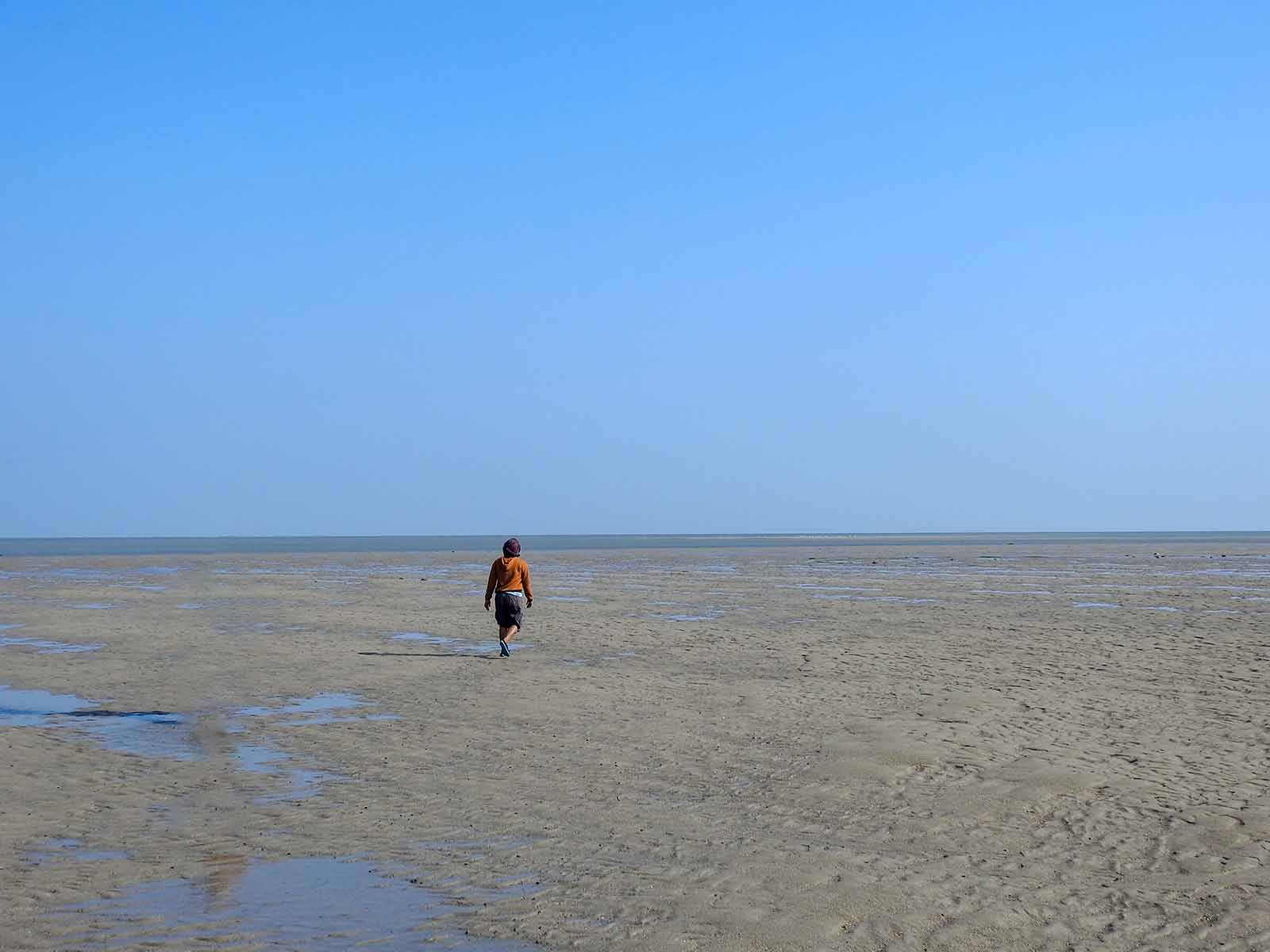
The lovely walk in narara during low tide. We enjoyed the breeze and the marine creatures in this Narara beach!
We searched for colorful fishes but the wind disturbed the water , making the view unclear. Still, we spotted a school of Striped eel fishes in a small pool. Even though it was just a half day walk in the reef, we enjoyed thoroughly. The Marine Interpretation Center was opened when we returned back. We thought to have a quick tour in the center and we were surprised to see the small center had many detailed information about the ecosystem. So we spent good time in seeing all the paintings and the sculptures that depicted the marine creatures. After seeing the interpretation center, we decided to drive to the road with sea view. We thought to just have a peek and then return back to hotel but we were surprised to see the birds activities in that place.
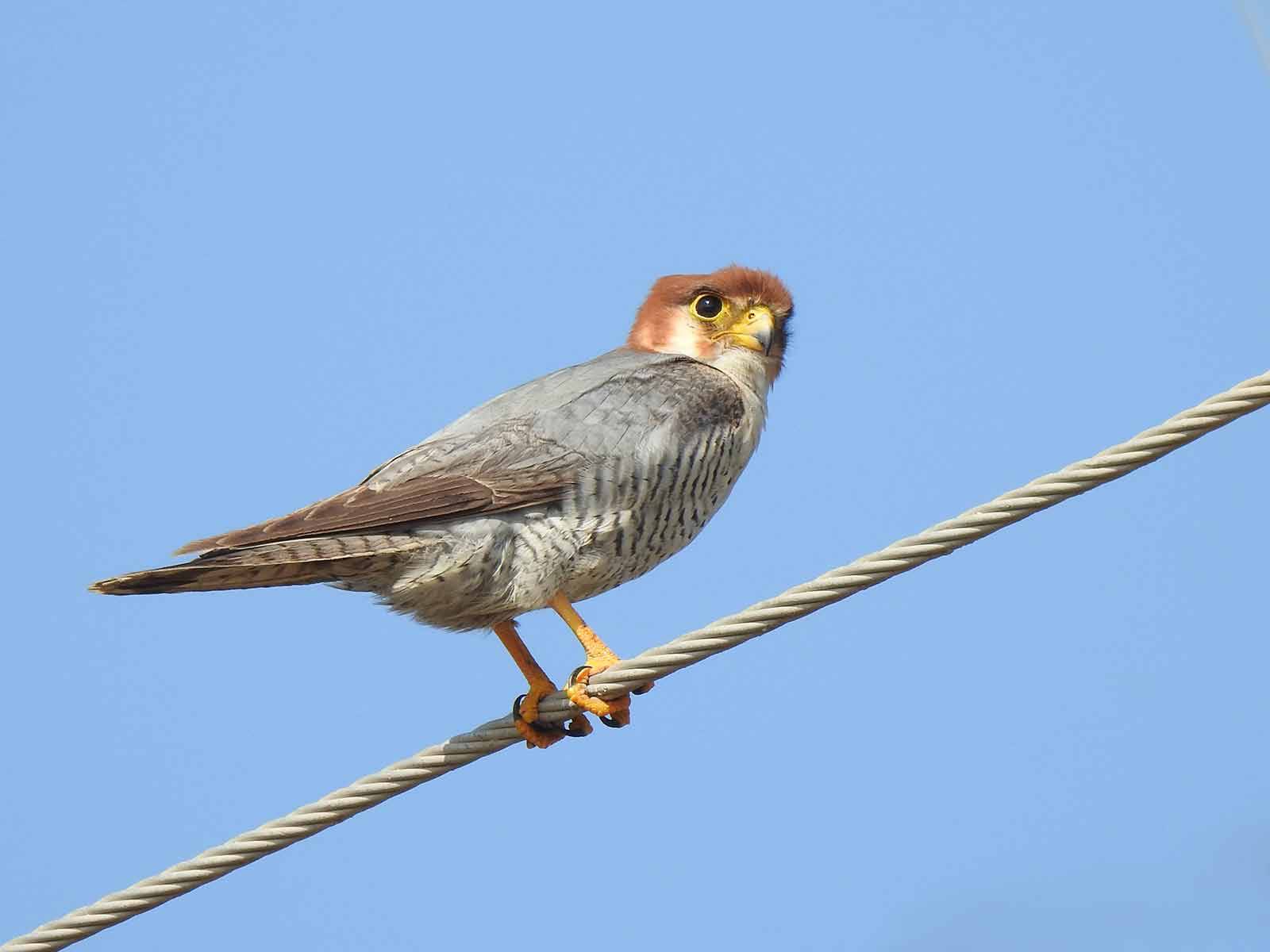
While we were watching shore birds, there was a surprise visitor on the cable. The Red-necked falcon tried to catch a lark who was flying around the bushes. This falcon is in “Near Threatened Status”.
There was no traffic on the road, so it was very peaceful to sit and watch the birds. The birds were moving quickly pecking up their foods and the hunting of reef heron was amazing to watch. Vinod setup a timelapse to record the tidal movements and we were surprised to see how the water level rose quickly in high tide. That was the first time we had seen good number of shore birds and marine creatures in India. Previously we had seen in Delaware,USA when we went to see horseshoe crabs and migratory birds. We were really happy that we visited Narara Marine National Park in our Gujarat Road Trip and had a glimpse at marine creatures.